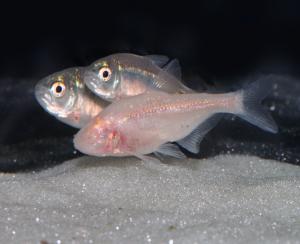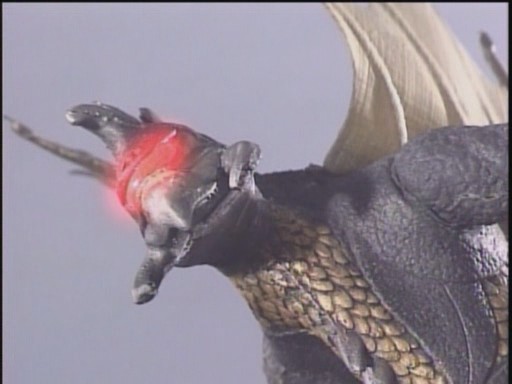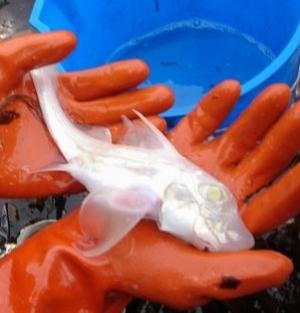
Let’s start with a story about blind cave fish regaining their sight…
Progeny Of Blind Cavefish Can ‘Regain’ Their Sight
Blind cavefish whose eyes have withered while living in complete darkness over the course of evolutionary time can be made to see again. In some cases, the offspring of mated pairs originating from distinct cave populations regain vision, researchers found. The result shows that mutations in different genes are responsible for eye loss in separate cavefish lineages that may not have been exposed to light for the last one million years.
…..
The study examined four populations of blind cave fish, Astyanax mexicanus, which inhabit different caves in northeast Mexico. Blind for millennia, these fish evolved from eyed, surface fish. The researchers’ genetic analysis showed that the evolutionary impairment of eye development, as well as the loss of pigmentation and other cave-related changes, resulted from mutations at multiple gene sites.
In order to gauge how genetic make-up could bring about the restoration of vision, the researchers created hybrids of the different cave fish populations. Among these various hybrids, they found that nearly 40 percent in some hybrid crosses could see.
Article about transplanting lenses onto cave fish, who then grew other eye-parts.
Researchers Find Way To Reverse Evolution Of Cave Fish Blindness
The old cliche “the blind leads the blind” may no longer apply to a population of cave fish. Eye parts lost during the past million years of evolution were restored in just a matter of days after a lens transplant from a sighted surface-dwelling fish of the same species (Astyanax mexicanus), according to a University of Maryland biology research report featured in the July 28 issue of Science.
….
Within eight days of implanting a lens from a sighted surface-dwelling fish to a blind cave fish of the same species, Maryland researchers began to see an eye develop from underneath a flap of skin. After two months, the cave fish had grown a large restored eye with a distinct pupil, cornea and iris. In addition, the retina of the restored eye showed rod photoreceptor cells, which are rare in the degenerate cave fish eye.
Why are cave fish blind? Regressive evolution:
‘Regressive Evolution’ In Cavefish: Natural Selection Or Genetic Drift
“Regressive evolution,” or the reduction of traits over time, is the result of either natural selection or genetic drift, according to a study on cavefish by researchers at New York University’s Department of Biology, the University of California at Berkeley’s Department of Integrative Biology, and the Harvard Medical School.
Previously, scientists could not determine which forces contributed to regressive evolution in cave-adapted species, and many doubt the role of natural selection in this process. Darwin himself, who famously questioned the role of natural selection in eye loss in cave fishes, said, “As it is difficult to imagine that eyes, although useless, could be in any way injurious to animals living in darkness, I attribute their loss wholly to disuse.”
Of course that doesn’t explain anything, as random genetic drift and natural selection are completely opposite! It’s either random or selected for! But the fact it seems to have showed up many times shows that there is selection for it, but the appearance is probably random, as it has dozens of different places the mutations showed up. Thus the regressive evolution could be countered by cross-breeding different populations of cave fish.
In addition: rare cave fish were still popping up in 1999..
Rare Cavefish Found By Scientists
Dr. Whit Gibbons and Dr. Kurt Buhlmann, scientists from the Savannah River Ecology Laboratory (SREL) accompanied John Jensen and Jim Ozier of the Georgia Department of Natural Resources on a spelunking expedition in north Georgia last week and found a rare, blind fish known as a southern cavefish.
…..Cavefish are not just blind; they are eyeless. They are small white fish known to inhabit the waters deep beneath the earth but they are rarely seen by people because they are found only at limited points at which underground lakes can be reached through caves. While some scientists look for the cavefish for years, this group had been underground for about an hour and had come to the end of a winding tunnel. The rain outside was making the water level of the cave rise when Buhlmann spotted the fish. Within 30 minutes he was able to capture it using a net. Only two other individual cavefish have ever been caught in Georgia, one in 1969 and one in 1973.
Little is known about this elusive fish. Even to call them rare may be inaccurate. They may be abundant, but simply live outside our knowledge. Their number cannot be estimated and no one knows how they live or reproduce. As Dr. Gibbons points out, “The ultimate question is how many species are living beneath the earth’s surface that humans are yet to find, and perhaps never will?”


















